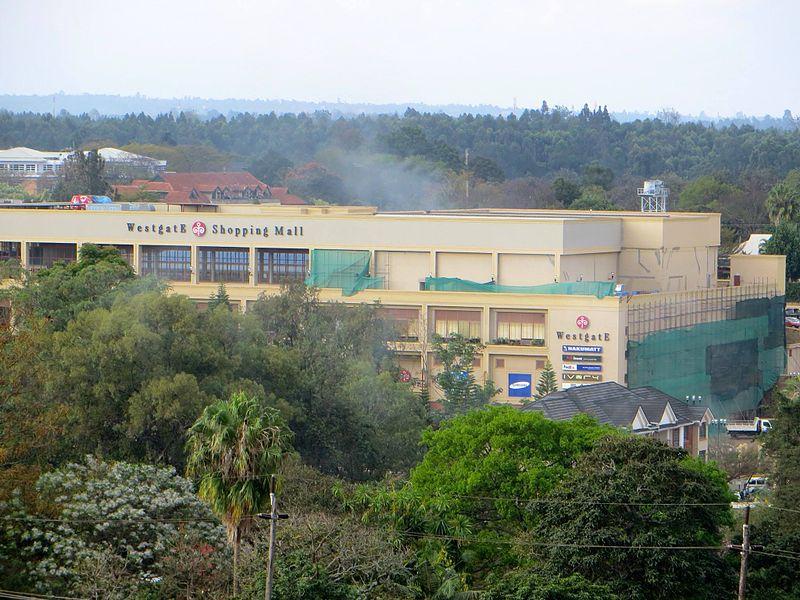The attacks on Westgate mall in Nairobi provide a number of insights into the decision making cycle of a terrorist organisation, some of which we tend to pay insufficient attention to. The targeting of a shopping mall was as much a decision about base line tactical and operational aspects of the attack as it was about symbolism and the media attention that the targeting would achieve. While a shopping mall or similar facility offers a number of tactical benefits, such as a delimited and defendable operating environment and a contained target population, in this particular instance it also offered communicative value.
As a representation of the burgeoning middle class in Kenya, and Africa more broadly, frequented as much by foreigners—specifically Westerners—as it was by locals, the shopping mall also served as a representation of the claimed Western influence on African society. It also provided a relatable target for engaging a Western audience. The broader target audience is able to imagine themselves at a shopping mall, and the intended fear and terror is more easily transmittable.
Adding to this dynamic was the demographic makeup of the customers at the mall. By targeting a location that was guaranteed to have Westerners present, Al Shabaab was able to ensure Western media coverage of the attack. The last decade of terrorist activity has made Western media audiences somewhat desensitised to conventional terrorist violence, and as last month’s attack and the 2008 Mumbai attacks demonstrate, garnering the kind of media attention that terrorist groups require necessitates spectacular or specifically targeted attacks.
By utilising these tactics, the terrorists were able to prolong the incident, and in turn prolong the media interest and coverage. By targeting affluent locations they’re also able to capitalise on the likelihood of citizen generated content, as witnessed by the proliferation of YouTube clips. Given the centrality of the communicative dynamic to terrorist actions, these considerations are likely to have been central to the planning of the incident. Additionally, Al Shabaab was able to tweet the incident live, providing blow by blow updates on their long standing Twitter account.
This siege tactic used in Nairobi was pioneered by Lashkar-e-Toiba in Pakistan and was at the core of the Mumbai attacks. Outside of its historical development in Kashmir, this tactic has thankfully not been deployed more frequently in the West, although it continues to be employed in Kashmir and across Afghanistan and Pakistan. Known as fidayeen attacks, these tactics were refined by LeT and deployed initially against military and law enforcement installations in Kashmir.
There are multiple advantages of this style of attack. The subsequent damage that was inflicted on the installations was one aspect of their success. Most importantly however, unlike a conventional suicide attack, fidayeen attacks provided an opportunity for defensive actions by the terrorists involved, removing the ‘suicide’ aspect implicit in a suicide bombing. This has been deemed to be more religiously permissible and thus more broadly tolerable to the wider community. This tactic, and its deployment in Mumbai and at Westgate, demonstrates the clear consideration of the communications aspects of a terrorist attack, and the importance to terrorist groups of perception amongst a number of different audiences.
The final, but crucially important dynamic of this operation was the pre-operational planning and intelligence that facilitated the duration and overall success (from the terrorist’s view) of the operation. In eerie similarities to the crucial pre-operational intelligence gathered in Mumbai by David Headley, reports have suggested that Al Shabaab went as far as to rent property inside the mall, facilitating the planting of weaponry and the provisioning of detailed intelligence on the facility. An operational understanding of key choke points, entry and exit points and other crucial planning information will have greatly assisted the attackers in achieving the siege duration they desired.
This serves as a reminder of an often forgotten aspect of terrorist actions and terrorist campaigns, namely that terrorist violence is a means rather than an end. Whether we’re discussing terrorist or insurgent behaviour, it remains crucial to understand that, overwhelmingly, these acts are designed to deliver a message rather than to solely inflict kinetic damage for its own sake.
Finally, and as David Kilcullen recently argued, and expands on in his new book, urbanised environments such as Mumbai or Nairobi represent potential sites for future terrorist incidents. While AS wasn’t able to overwhelm Nairobi to the same extent as LeT was able to cripple Mumbai, the implications for Africa’s major urban centres are substantial. Africa is facing a growing challenge in confronting a diversity of non-state terrorist entities that, if the attack in Nairobi, and the oil facility siege in Algeria are any indication, have an increasing capability to deploy smart, effective tactics against vulnerable targets.
Compounding these problems is the broader operating environment that Africa presents for these groups. As was recently written in The Atlantic,
Africa’s Islamists are able to take advantage of the fact that many of the continents countries have porous borders; weak and corrupt central governments; undertrained and underequipped militaries; flourishing drug trades that provide a steady source of income; and vast, lawless spaces…
When these broader facilitating factors are combined with the structural advantages that an urban environment presents to a terrorist cell, Africa—and specifically its growing urbanised centres—will need to think deeply about the approach they want to take in relation to countering these types of threats, and about the compromises they’re prepared to make to ensure the security of both the local population and the growing foreign presence in this part of the world.
Levi J. West is a lecturer in terrorism and national security and course coordinator of the Master of Terrorism and Security Studies at the Australian Graduate School of Policing and Security, Charles Sturt University. Image courtesy of Wikimedia Commons.
